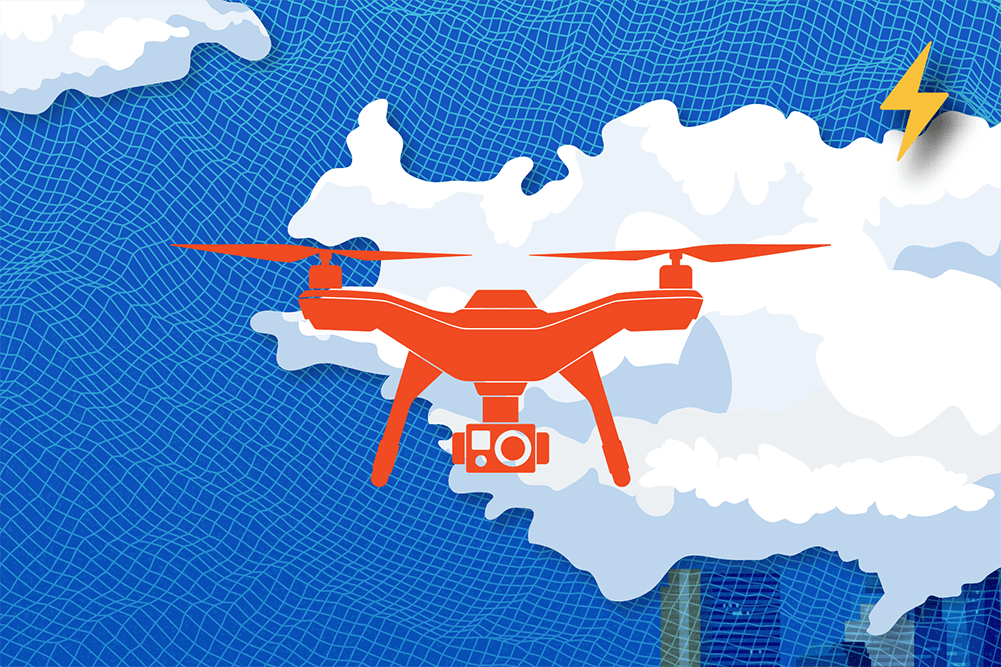
The top image is a bit of a troll, I'm not here to talk about UAVs (Unmanned Aerial Vehicles / Drones). The cloud I'm actually talking about in this NoDamage report is the virtual cloud.
"The cloud refers to software and services that run on the Internet, instead of locally on your computer. Most cloud services can be accessed through a Web browser like Firefox or Google Chrome, and some companies offer dedicated mobile apps." Vox
Some examples of cloud services include Google Drive, Apple iCloud, and Netflix.
Most One Call / 811 Centers now have online facilities that are processing more tickets that the phone lines. That's a good first step in getting utility locate information into the cloud but there's so much more that can be leveraged by utility owners, municipalities and locators alike.
Mapping is an excellent place to begin with a cloud-based solution. How can we gather, store, and retrieve vital subsurface utility information for future generations? Cloud-based data gathering, storage, and dissemination tools, which are altering the subsurface utility mapping business, can provide an answer. There is an urgent need to standardize procedures in utility tracing, surveying, and data sharing in the utility locating and mapping communities.
Data is essential for keeping accurate GIS databases, which is mandated by law in some cases. Drawings, maps, measurements and images help future users to locate, map, and identify buried facilities. Storing all these in the cloud isn't too difficult but using them and integrating them together can be a challenge. For locators, having a ticket management system like Utilocate is a really good solution for storing your assets and accessing them in one comprehensive package.
Cloud-based storage designers have begun working with software developers to create solutions geared at easing workflows for subsurface locating and mapping specialists.
Utility locators and surveyors have long employed EMI and GPR technologies to locate and identify underground infrastructure, but can now leverage cloud-based technology, in conjunction with GPS and Bluetooth transmissions, to capture, locate, save, and distribute excellent utility work straight from the job site. Locators can use this data by transferring it to their locate ticket management systems. Users may use Utilocate to enter addresses, locations, drawings, and other information to create an accurate image of where utilities are buried.
It can then deliver a "positive response" to a utility locate request and aid in the documentation of One-Call responders' responses. With geocoding, the linked metadata, EMI, GPR, photos, and vacuum test hole data may be readily survey-located. A cloud-based storage and retrieval solution will allow you to save this data by geographical location rather than project, making it easier to retrieve for future projects.
Using the cloud to locate subsurface utilities will enable the integration of other technologies like as Augmented Reality, AI decision making, BIM, and the usage of UAVs with software such as Exodigo.
"The future of utility surveying is that the certified surveyor no longer needs to travel to construction sites... With modern LiDAR and photogrammetric technology it is possible to record a point cloud of the open trench which can be stored in the cloud and contains much more information than a traditional set of survey points. If the location of all the underground utilities in the proposed construction site is Class A, known to 40 cm accuracy or better, augmented reality technology provides a reliable way of visualizing this data in the field on a handheld device." Between the Poles
So if you're wondering how do I get my data into the cloud? Then you've got to assess what data you've currently got and how you want to use it. ESRI mapping is a great GIS solution that can integrate well with a ticket management system like Utilocate. With Utilocate you have somewhere to store and access your images, drawings, maps and reports. From there depending on your role you could look at implementing BIM with a solution like Autodesk Revit and check out Exodigo for their UAV solutions.
Share this Post











